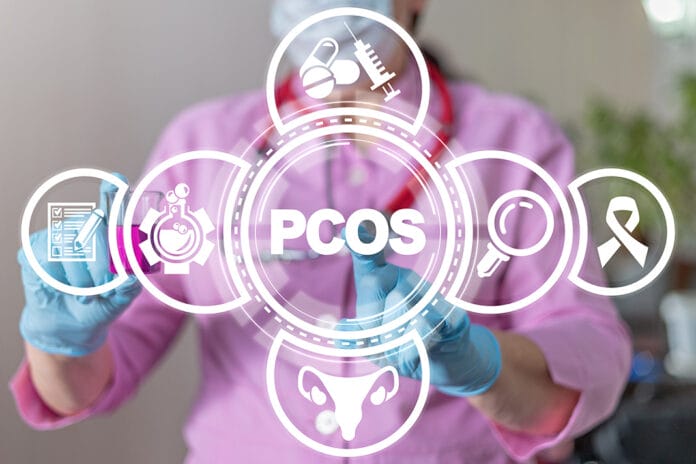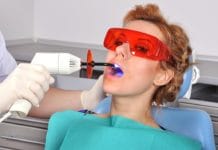When a patient confided a few years ago about a recent diagnosis of polycystic ovary syndrome (PCOS), I had never heard of the illness before, nor was I aware of the severity of the symptoms.
After her extraoral and intraoral examination, I learned that her condition had negatively affected her overall health. The patient’s hair had significantly fallen out, she gained excessive weight, and she indicated experiencing sleep deprivation. She had been struggling with gingivitis for some time, often bleeding while brushing.
Why is it important for dental hygienists to be aware of PCOS or, quite frankly, any other condition presented by patients?
What is Polycystic Ovary Syndrome (PCOS)?
Polycystic ovary syndrome is a health problem that causes an imbalance of reproductive hormones. During the ovulation period, follicle growth often is hindered. This is because of the disrupted levels of either the luteinizing hormone (LH) or follicle-stimulating hormone (FSH).
A follicle-stimulating hormone is responsible for follicle (egg) development. A luteinizing hormone aids in the stimulation of the corpus luteum in order to produce estrogen and progesterone. Low levels of progesterone and estrogen can lead to infertility.
PCOS is one of the most common causes of female infertility, affecting 6% to 12% (as many as 5 million) of US women of reproductive age.1 This issue can develop at any age after puberty and causes a buildup of undeveloped follicles in the ovaries, which grow into cysts. Most women find out that they have PCOS between the ages of 20 to 30 years old. This is around the time they realize they are having difficulty getting pregnant and seek medical care.
The exact cause of PCOS is unclear. Studies have found that genetic and environmental factors contribute to the development of polycystic ovary syndrome.
The PCOS patient’s gingival health is influenced by the altered, circulating hormones in the periodontal tissues. The circulating hormones include gonadotropin-releasing hormone (GnRH), LH/FSH ratio, estrogens, androgens, insulin, cortisol, growth hormone, vitamin D, and parathyroid hormone. The imbalance of hormones causes changes in oral flora and pro-inflammatory cytokines.3 Studies have indicated increased levels of pro-inflammatory cytokines. This is a group of proteins that control inflammation and immunity. As a result, chronic inflammation is developed, leading to oral health concerns like periodontitis.
Another key factor is chronic low-grade inflammation. This is when the white blood cell count is significantly lower and leads to a high risk for coronary heart disease (CHD) and type 2 diabetes.
Signs and Symptoms of Polycystic Ovary Syndrome:
- Hirsutism: This occurs due to excess androgen production (male hormone). The excess of androgen causes PCOS women to have masculine features. We can often visually notice this on the face, chest, and back.
- Androgenic alopecia: The excess androgenic hormones leads to the thinning of hair.
- Obesity: It is a common disease that can worsen the complications of the disorder ─ in particular, the reproductive and digestive system due to the high rate of glucose intolerance.
- Irregular periods: Women with PCOS may not ovulate regularly. They may have eight periods or fewer a year. This can make it difficult to conceive and cause heavy bleeding during periods.
- Risk of developing cardiovascular diseases such as myocardial infarction, stroke, and heart valve complications.
- High blood pressure: There are no symptoms when it comes to high blood pressure. If it is not controlled, hypertension can cause complications to the heart, brain, and kidney.
- Diabetes: PCOS women are at higher risk of developing type II diabetes due to being insulant resistant. Pregnant women with PCOS are more likely to develop gestational diabetes.
- Obstructive sleep apnea: Weight gain and obesity can lead to obstructive sleep apnea. This occurs when the walls of the throat relax and narrow during sleep. Weight loss can help manage the severity of sleep apnea, or in most cases, we can recommend a referral to a sleep doctor and oral appliances.
Polycystic Ovary Syndrome Treatment Options
There is no cure for PCOS. However, some treatments are available to decrease the severity of the side effects.
- For regulation of the menstrual cycle as well as to reduce acne and hair growth, physicians may prescribe a combination birth control pill. Another option is progestin therapy that not only regulates periods but helps against endometrial cancer. Endometrial cancer develops in the womb lining, and PCOS women are at risk of developing endometrial cancer.
- For fertility, physicians may prescribe Clomiphene, Letrozole, Metformin or Gonadotropin.
- Lifestyle changes such as maintaining a healthy weight, staying active, and limiting carbohydrate intake will reduce the side effects of PCOS. To reduce gingivitis, PCOS patients should be advised to have routine dental visits and maintain good oral hygiene practices.
Discuss with patients the importance and correlation of how good OHI and regular dental visits can reduce the chronic inflammation associated with periodontal disease. As dental hygienists, we are aware that our oral health is often a reflection of our general health. Educate your patients about how increased chronic inflammation in the gingiva can lead to an increased risk of diseases.
Dental hygienists should have a basic understanding of PCOS. By doing so, our hygiene appointments will better suit our PCOS patients. As dental professionals, our focus is prevention and education. With a general knowledge of the signs and symptoms of PCOS, we can advise our patients to consult with their physician. It is crucial to thoroughly check the medical conditions of dental hygiene patients.
Need CE? Check Out the Self-Study CE Courses from Today’s RDH!
Listen to the Today’s RDH Dental Hygiene Podcast Below:
References
- PCOS (Polycystic Ovary Syndrome) and Diabetes. (2020, March 24). Centers for Disease Control and Prevention. Retrieved from https://www.cdc.gov/diabetes/basics/pcos.html#
- Kelly, C.C., Lyall, H., Petrie, J.R., Gould, G.W., Connell, J.M., Sattar, N. Low-grade Chronic Inflammation in Women with Polycystic Ovarian Syndrome. The Journal of Clinical Endocrinology and Metabolism. 2001; 86(6): 2453–2455. https://doi.org/10.1210/jcem.86.6.7580.
- Rahiminejad, M.E., Moaddab, A., Zaryoun, H., Rabiee, S., Moaddab, A., Khodadoustan, A. Comparison of Prevalence of Periodontal Disease in Women with Polycystic Ovary Syndrome and Healthy Controls. Dent Res J (Isfahan). 2015; 12(6): 507-512. doi:10.4103/1735-3327.170547.
- Tanguturi, S.C., Nagarakanti, S. Polycystic Ovary Syndrome and Periodontal disease: Underlying Links – A Review. Indian Journal of Endocrinology and Metabolism. 2018; 22(2): 267–273. Retrieved from https://doi.org/10.4103/ijem.IJEM_577_17
- Tasali, E., Van Cauter, E., Ehrmann, D.A. Polycystic Ovary Syndrome and Obstructive Sleep Apnea. Sleep Medicine Clinics. 2008; 3(1): 37–46. Retrieved from https://doi.org/10.1016/j.jsmc.2007.11.001
- Trivax, B., Azziz, R. Diagnosis of Polycystic Ovary Syndrome. Clinical Obstetrics and Gynecology. 2007; 50(1): 168–177. Retrieved from https://doi.org/10.1097/GRF.0b013e31802f351b











